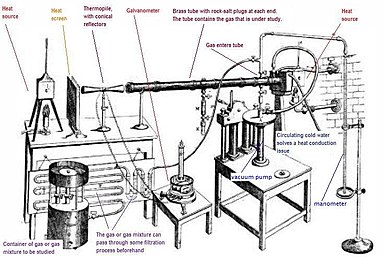After my complaint about how someone like Dr. Pielke uses the contrarian-playbook to manipulating data intent on obscuring scientifically gained understanding, it was quite refreshing to read a Houston Chronicle article written by Texas State Climatologist and a Professor of Atmospheric Sciences at Texas A&M University, John Nielsen-Gammon, titled: "About the Lack of Warming…"
As I point out in the previous post, Climatologist are aware of reasons for global surface temperatures appearing to level off. But, that appearance is an illusion, as this interesting article explains.
In this case I have left long gaps in this meaty article, but provide the link to the complete article.
About the Lack of Warming…
by John Nielsen-Gammon
"It’s common knowledge among those who follow such things that global temperatures have not gone up very much in the past several years. This has caused many to believe that the recent lack of warming contradicts what climate models say should happen in response to the increasing Tyndall gases.
This, in turn, has provoked the counterargument that the Earth is still warming, just on a longer time scale, or that the recent period is too short to yield statistically significant results.
"These counterarguments are not compelling. Fundamentally, any change in global temperature, even if it’s just from one year to another, must have a cause. Saying that we need to look at longer time scales denies the need to find the cause of the actual global temperature changes (or lack thereof) at shorter time scales.
"Such causes have been sought, and a few papers have proposed various combinations of cloud cover, volcanic aerosols, the El Niño/Southern Oscillation (ENSO), deep ocean heat uptake, and so forth. A recent paper I like by Foster and Rahmsdorf (discussed here and here) takes a statistical approach to attempt to eliminate the effect of the other known forcing mechanisms, and what’s left over is a fairly steady warming. Others have noted, more casually, that 2011 was the warmest La Niña year on record.
"I decided to take a simple approach at looking at the effect of ENSO. Using GISTemp Land/Ocean Index values and Niño 3.4 values, I computed 12-month running averages of Niño 3.4 and compared them to the average GISTemp values at lags of 0, 3, and 6 months. Foster and Rahmsdorf used a diferent ENSO index and found optimal lags between 2 and 5 months. So one would guess that a 3-month lag would fit the data best in my case, and indeed it did.
"The normal threshold for El Niño or La Niña, as applied by the Climate Prediction Center, is for five consecutive months of at least 0.5 C above or below normal in a key region of the tropical Pacific. For working with annual data, I decided to call an annual average above 0.5 C an El Niño and an annual average below -0.5 C a La Niña. Then I plotted it up, color-coding each year for whether it was El Niño, La Niña, or neither (neutral). Here’s the result:"
{... for more click here}
"There aren’t that many full-blown El Niño events, but they global temperatures during El Niños seem to be following a steady upward trend. There are more La Niña events, and those global temperatures also clearly follow a steady upward trend. Finally, the temperatures during the many neutral years also show no sign of departing from a steady upward trend. There’s enough scatter in the neutral years that if one had considered the period 1977-1987, or the period 1987-1997, one might be tempted to say that the neutral years had little or no warming. But the past decade fits nicely with the long-term upward trend of 0.16 C/decade shown by all three time series."
{... for more click here}
"So about that lack of warming: Yes, it’s real. You can thank La Niña.
As for whether this means that Tyndall gases are no longer having an impact: Nice try."~~~~~~~~~~~~~~~~~~~~~~~~~~~~~~~~~~~~~~~~~~~~~~~~
Shame on all the self-interested contrarians who would manipulate facts for profits rather than digest data for learning.

No comments:
Post a Comment